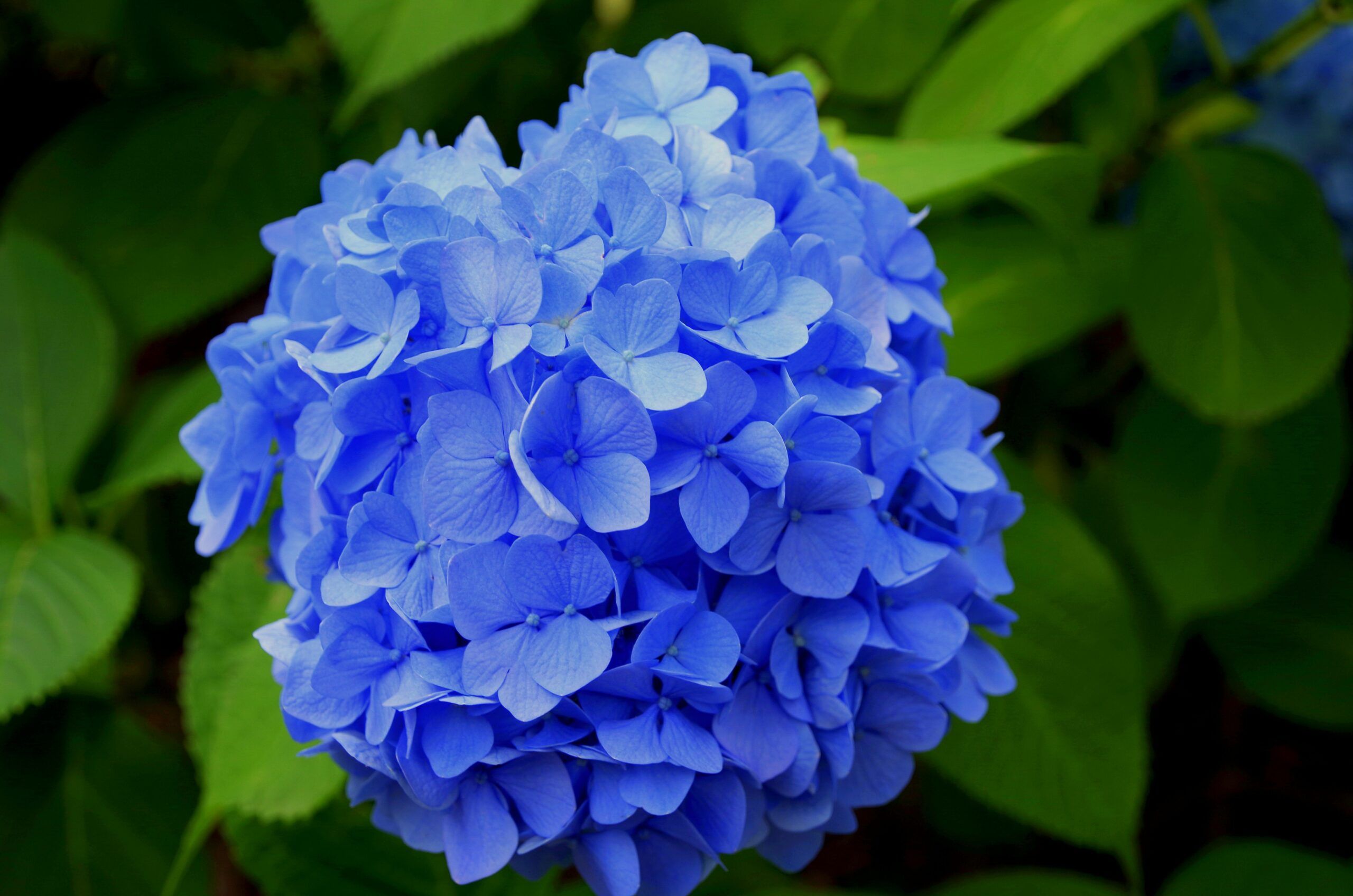Hydrangeas are a summer garden staple. These versatile shrubs come in a wide range of colors, sizes, and shapes, making them a favorite among gardeners. Whether you’re a seasoned green thumb or a novice plant enthusiast, we’ll give you tips to help you grow thriving hydrangeas.
Hydrangea Varieties
Before caring for hydrangeas, familiarize yourself with the different types. Each variety has unique characteristics and requirements that influence how you should care for them.
Popular Types of Hydrangeas
Hydrangeas come in several varieties. Here are a few:
- Bigleaf hydrangeas (H. macrophylla): These include the classic mopheads with large, round flower clusters and lacecaps with flat flower heads.
- Panicle hydrangeas (H. paniculata): Known for their cone-shaped flowers, these are among the most cold-resistant varieties.
- Oakleaf hydrangeas (H. quercifolia): Native to the United States, these hydrangeas have distinctive lobed leaves resembling oak leaves.
- Smooth hydrangeas (H. arborescens): Another native species, these are known for their large, round flower heads and cold tolerance.
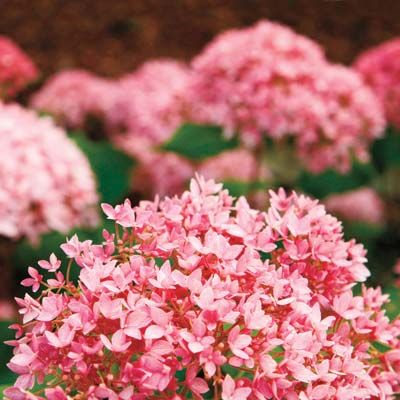
Choosing the Right Hydrangea for Your Garden
When deciding on a hydrangea, consider your climate, available space, and desired bloom. For example, if you live in a region with harsh winters, opt for cold-hardy varieties like panicle or smooth hydrangeas. For shaded areas, oakleaf hydrangeas are an excellent choice. If you’re after vibrant color, bigleaf hydrangeas offer the most variety in bloom shades.
Hydrangea Planting Techniques
Proper planting is the foundation for healthy, thriving hydrangeas. Understanding soil conditions and sunlight requirements is key.
Ideal Soil Conditions
Hydrangeas prefer well-draining, fertile soil rich in organic matter. Before planting, add compost to your soil to improve its structure and nutrient content. Most hydrangeas thrive in slightly acidic soil with a pH between 5–6.5. However, soil pH can also affect bloom color in some varieties, which we’ll touch on later.
Perfect Sunlight Requirements
While hydrangeas are often associated with shade, their sunlight needs vary by species. Horticulturist Michael Dirr says, “For most hydrangeas, the farther north they are, the more sun they can stand.” In general, aim for a location that receives morning sun and afternoon shade, especially in warmer climates. This balance protects the plants from intense afternoon heat while providing enough light for growth and flowering.
Nurturing Hydrangeas for Growth
Once your hydrangeas are planted, consistent care is necessary for their health. This includes ample watering and fertilization.
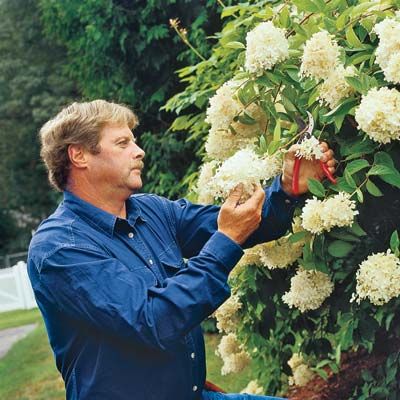
Watering Strategies
Hydrangeas have moderate to high water needs, especially during their active growing season. Water deeply and regularly, aiming to keep the soil moist but not waterlogged. Mulching around the plant’s base can help keep moisture and regulate soil temperature. During hot, dry periods, you may need to water more frequently to prevent wilting and stress.
Fertilization Tips
Feed your hydrangeas with a balanced, slow-release fertilizer in early spring as new growth emerges. A second application in late spring or early summer can support continued growth and blooming. However, be cautious not to over-fertilize, as this can lead to leaf growth without actual flowers. “I always use half the amount of fertilizer recommended on the label. That way you’ll be encouraging blooms and not more leafy growth,” Dirr says.
Encouraging Abundant Hydrangea Blooms
Proper pruning and pH management will maximize your hydrangea’s blooming potential. These techniques can significantly improve the quantity and quality of flowers.
Pruning Techniques for Different Hydrangea Types
Pruning hydrangeas correctly is critical for flower production, but the timing and method vary by species.
- Bigleaf and oakleaf hydrangeas: Prune after flowering in late summer or early fall, as these bloom on old wood.
- Panicle and smooth hydrangeas: Prune in late winter or early spring before new growth begins, as they bloom on new wood.
For all types, remove dead, damaged, or crossing branches to improve air circulation and plant structure. “Whether to prune hydrangeas is often debated, but studies have shown that dead-heading spent flowers definitely encourages more and bigger blooms,” says Dirr.
Managing Soil pH for Color Control
For bigleaf hydrangeas, soil pH can influence bloom color. In acidic soil (pH below 6), flowers tend to be blue, while alkaline soil (pH above 7) produces pink blooms. To adjust soil pH, add aluminum sulfate to increase acidity for blue flowers, or lime to raise pH for pink blooms. Remember that not all hydrangea varieties change color based on soil pH.
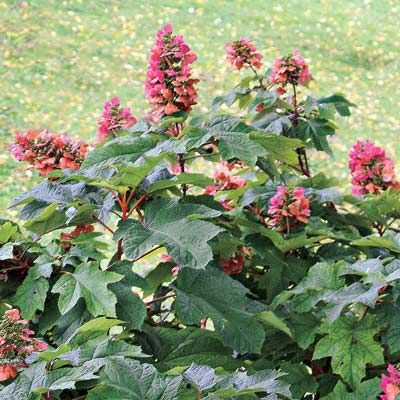
Addressing Common Hydrangea Issues
Even with proper care, hydrangeas can sometimes face challenges. Knowing how to fix common problems will help keep your plants healthy and thriving.
Dealing with Pests and Diseases
Hydrangeas are typically quite hardy, but can be susceptible to certain pests and diseases. Common issues include the following:
- Aphids and spider mites: Control with insecticidal soap, or a good blast of water to the plant.
- Leaf spot: Remove affected leaves and avoid overhead watering.
- Powdery mildew: Improve air circulation and apply fungicides if necessary.
Regular inspection and quick treatment can prevent these issues from becoming worse.
Addressing Bloom Failures
If your hydrangeas aren’t blooming as expected, consider these potential causes:
- Excessive shade: Move plants to a sunnier spot if they’re not receiving enough light.
- Improper pruning: Ensure you’re pruning at the right time for your hydrangea type, and not cutting too close to the buds, or too much.
- Late frosts: Protect buds from late spring frosts with covers or by planting in sheltered locations.
- Overfertilization: Reduce fertilizer application to encourage blooming over foliage growth.
Propagating Hydrangeas
Propagating your hydrangea collection can help you fill your garden without spending more money. Here are two methods.
Growing Hydrangeas from Cuttings
Softwood cuttings taken in summer are a great method for propagating hydrangeas. Here’s a simplified version of Dirr’s method:
- Locate a stem of softwood between the hard, woody growth at the bottom of the plant.
- Cut a 5-inch piece of softwood that snaps cleanly when bent and has several leaves.
- Trim it into 5-inch-long pieces that each have a leaf toward the top; remove extra leaves.
- Dip the cut end in rooting hormone.
- Plant in a soilless mix with perlite.
- Cover with plastic and keep in shade, misting regularly.
- After about four weeks, check for root development.
Layering and Division Methods
Layering is another simple propagation technique. Bend a low-growing branch to the ground, make a small wound, and cover with soil and, if necessary, a rock or pin to keep it buried. After roots form, cut the new plant from the parent. For smooth and oakleaf hydrangeas, division in early spring or fall can be an effective way to create new plants.
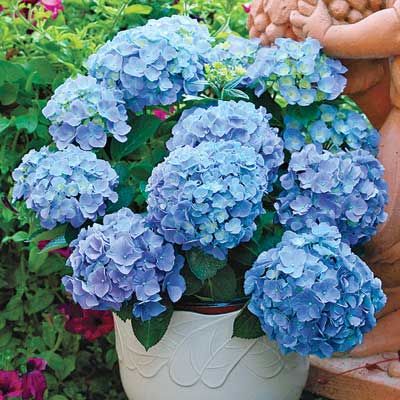
Seasonal Care for Hydrangeas
Adapting your care routine to the changing seasons will keep your hydrangeas healthy year-round.
Spring and Summer Maintenance
In spring, remove winter protection and apply fertilizer as new growth appears. Monitor water needs closely during the growing season, especially in hot weather. Dead-head spent blooms to encourage continued flowering.
Fall and Winter Protection
In fall, reduce watering as plants enter dormancy. For cold-sensitive varieties like bigleaf hydrangeas, create protection from the winter weather by wrapping plants in burlap or applying a thick layer of mulch around the base. In spring, gradually remove protection as the risk of frost passes.

Keeping Your Hydrangea Garden Thriving
For a garden filled with gorgeous, luscious hydrangeas, we recommend integrating companion plants, using the right tools, and creating a maintenance schedule.
Choosing Companion Plants
Pairing hydrangeas with compatible plants can enhance their beauty and health. Here are some options:
- Hostas: Their foliage contrasts beautifully with hydrangea blooms and they thrive in similar conditions.
- Ferns: These provide a lush, green backdrop that accentuates hydrangea flowers.
- Azaleas: Their vibrant colors complement hydrangeas, and they share similar soil preferences.
Choosing the right companions can also help manage soil moisture and prevent weeds.
Essential Gardening Tools
Having the right tools can make hydrangea care more manageable. Your toolkit should include the following:
- Quality pruners for clean cuts
- A soil pH tester to monitor and adjust soil conditions
- Mulch to maintain soil moisture and temperature
- A good watering system, such as soaker hoses, for consistent moisture
Creating a Maintenance Schedule
Developing a regular hydrangea care schedule helps you stay in tune with your plants’ needs. A typical schedule might include the following:
- Spring: Remove winter protection, fertilize, and monitor for pests.
- Summer: Water regularly, mulch, and dead-head blooms.
- Fall: Prepare for dormancy, reduce watering, and protect winter-sensitive varieties.
- Winter: Minimal care, mostly checking that protection remains in place.
Our Conclusion
Growing gorgeous hydrangeas is a realistic goal for any gardener willing to commit to the right care and attention. By understanding your hydrangea’s specific needs, you can enjoy a stunning blooms year after year. Remember that patience is key when growing hydrangeas. It may take a season or two for newly planted shrubs to reach their full blooming potential.
